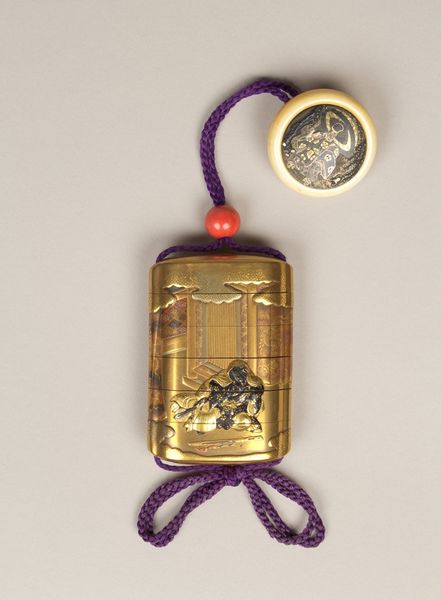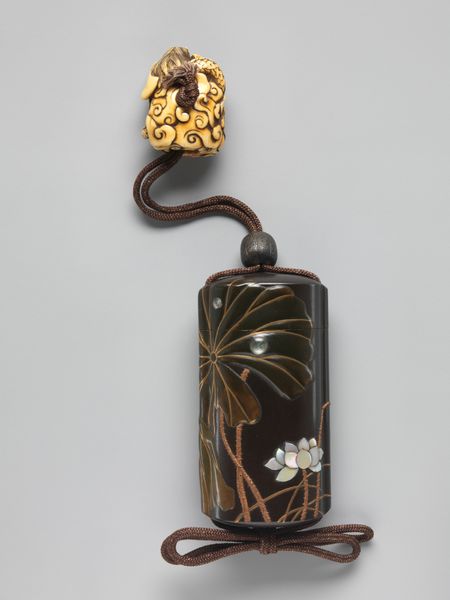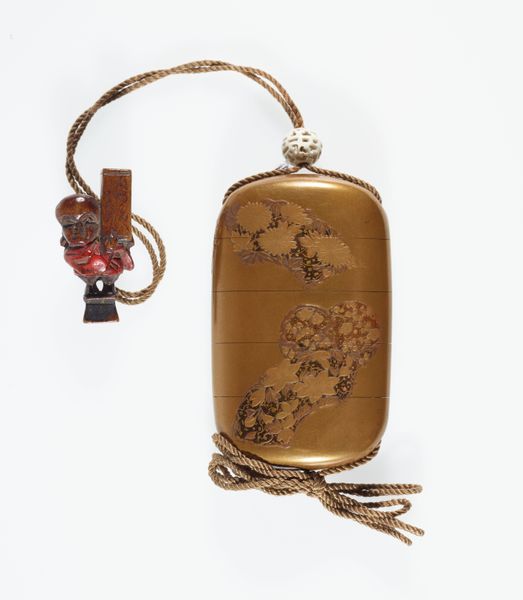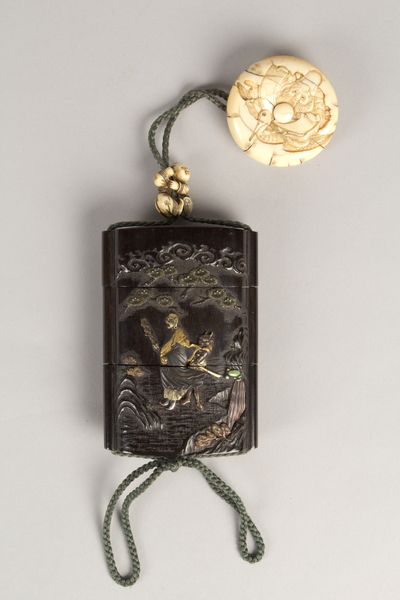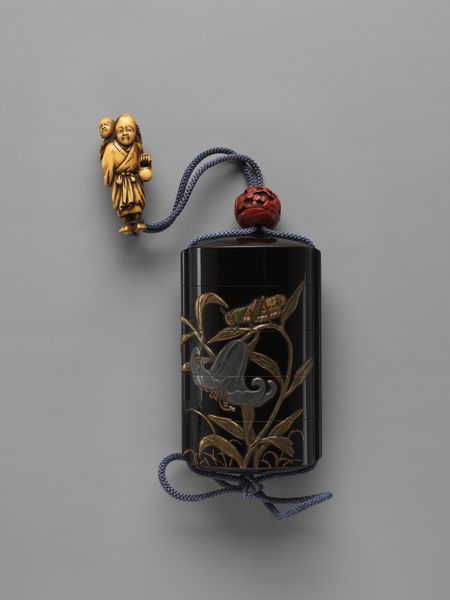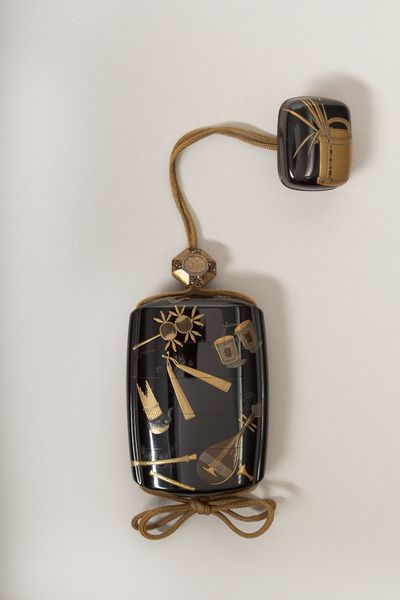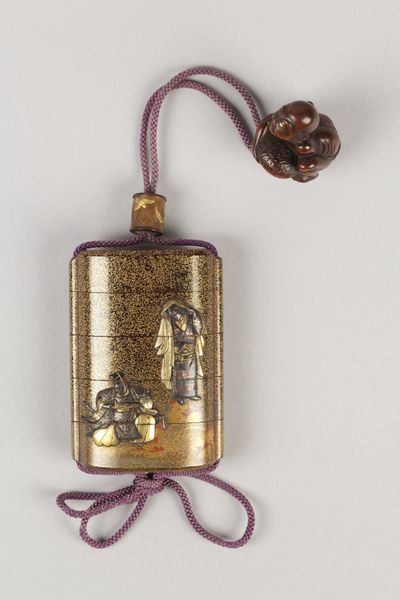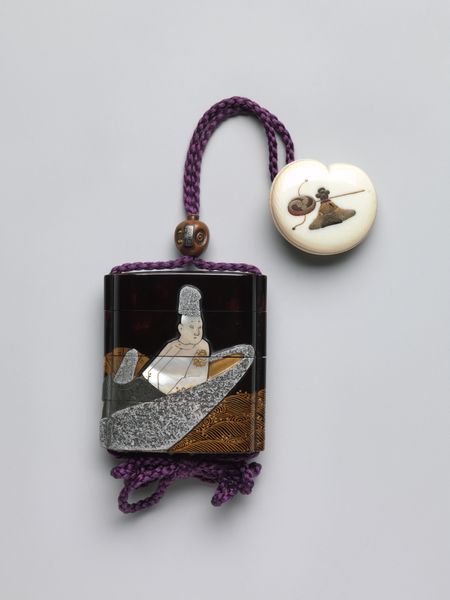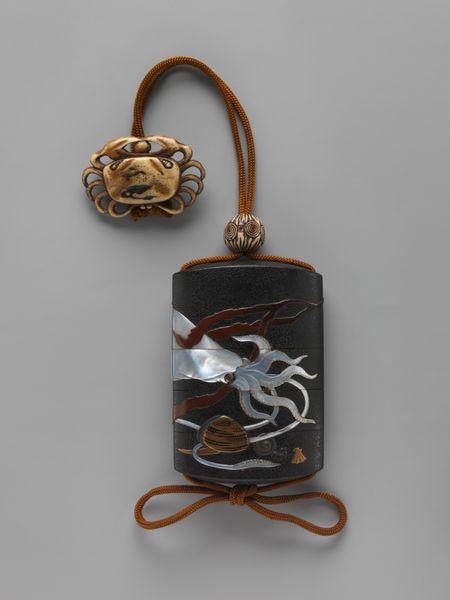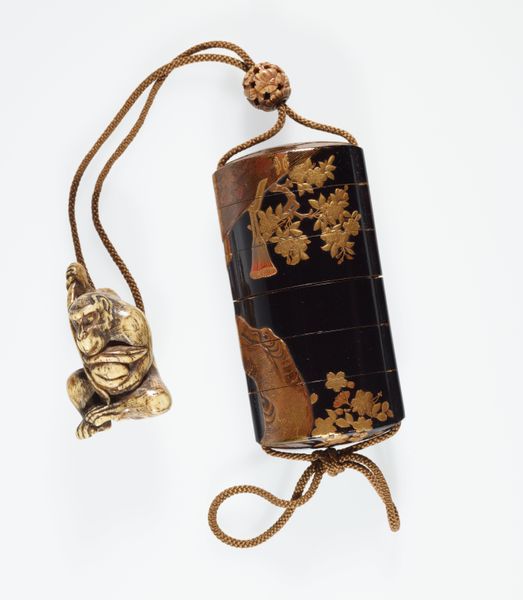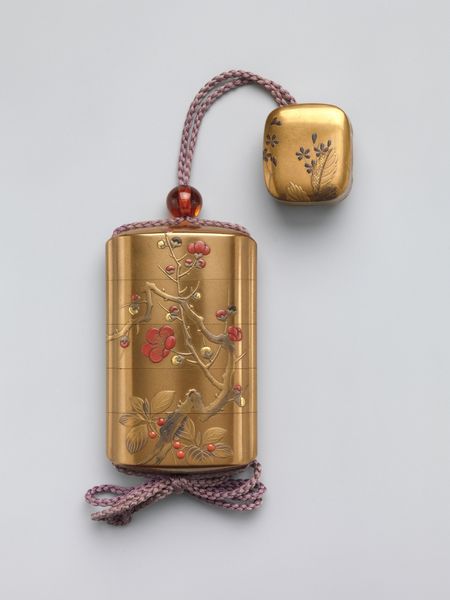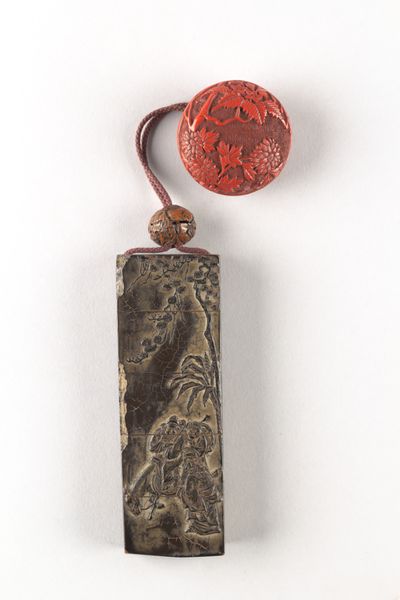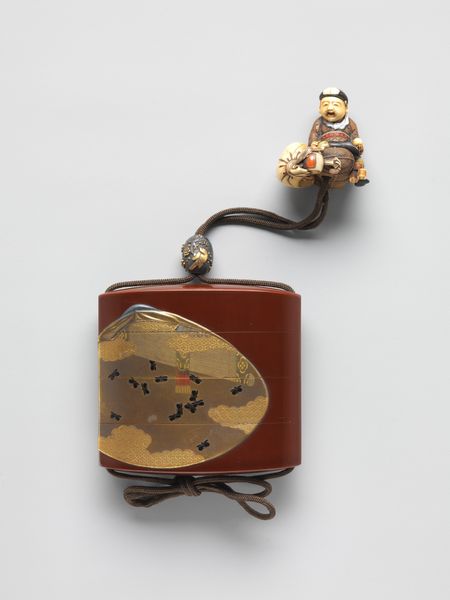
Case (Inrō) with Design of Autumn Flowers 1700 - 1733
0:00
0:00
tempera, guilding
#
baroque
#
tempera
#
asian-art
#
guilding
#
japan
#
decorative-art
#
miniature
Dimensions: H. 3 1/16 in. (7.8 cm); W. 2 5/16 in. (5.9 cm); D. 1 1/16 in. (2.7 cm)
Copyright: Public Domain
Curator: What strikes me immediately about this inrō is its intimacy. The delicate floral motifs against the deep black lacquer seem to hold a quiet, contained world. Editor: Indeed, and think about the owner too—this miniature artwork, "Case (Inrō) with Design of Autumn Flowers," dates to the early 18th century, roughly 1700-1733, and was created by Shiomi Masanari in Japan. Its function, holding personal seals and medicine, underscores the relationship between aesthetics and lived experience. Curator: Absolutely, the inrō’s very design signifies something. The tiered compartments point to a structured way of containing valuable items. The selection of autumn flowers seems carefully chosen—chrysanthemums for longevity and perhaps others whispering of fleeting beauty. This inrō speaks to the poignancy of ephemeral things, no? Editor: Well, Shiomi Masanari was part of a lineage of lacquer artists, active in Kyoto during a pivotal period of shifting political power. Thinking about this piece from an activist standpoint, the decorative opulence displayed during the Edo period becomes fraught when considered within the system of enforced isolation under the Tokugawa shogunate. Did art truly benefit everyone during that time? Curator: Certainly, access was limited, but perhaps the intent to invoke broader themes. We see how floral designs of the aristocracy get reimagined by merchants and artisans; are the classes trying to reconcile here? I interpret this as the yearning of an era where societal hierarchy attempts to be overturned, represented symbolically by guilding tempera. Editor: Your point brings up a related question. Where exactly does cultural influence appear in artistic creations, such as these floral choices? Is Masanari trying to make a statement, or just displaying the culture around him? I understand where your read comes from, I'm simply pointing out this work’s complicated ties to its specific period in history. Curator: Fair enough. Perhaps these pieces can contain multitudes and can also hold varying, co-existing interpretations across culture and across time. Editor: Exactly, by focusing on both aesthetics and sociopolitical context we enable the viewer to reflect and consider the complicated histories that art objects represent.
Comments
No comments
Be the first to comment and join the conversation on the ultimate creative platform.
